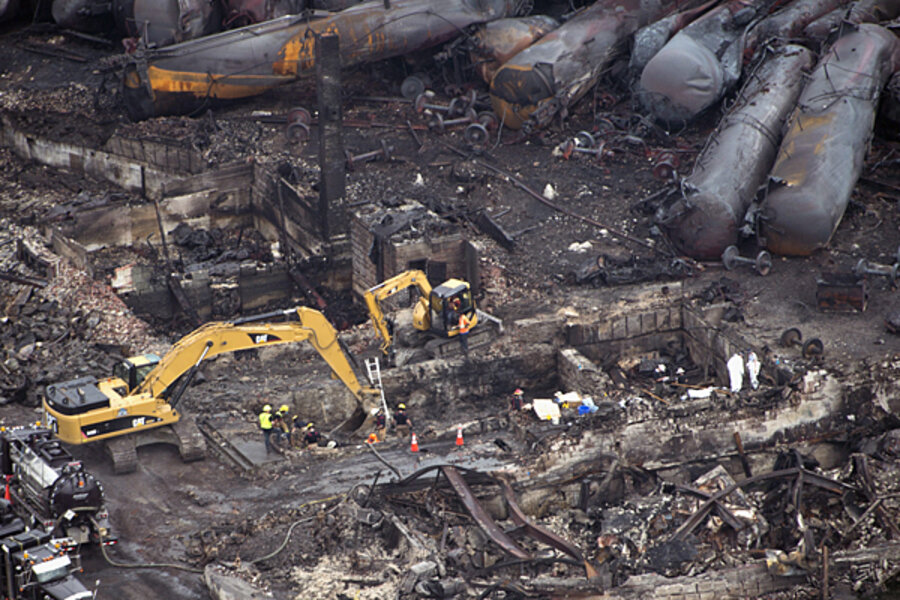NTSB warned of rail car used in Quebec train fire
Loading...
It turns out that both US and Canadian regulators have been warning for years that the type of rail car involved in the fatal derailment and explosion in Quebec on 6th July is far more prone to rupturing in accidents than other models available.
The rail car, known as the DOT-111, is produced by several manufacturers, and very popular, carrying most of the hazardous waste that is transported around North America by rail. Unfortunately the rail industry has persistently opposed any plans proposed by rail safety agencies to force retrofits on all the cars in order to make reduce the risk of leaks and fires during accidents.
Deborah Hersman, the chairman of the NTSB, said that “during a number of accident investigations over a period of years, the NTSB has noted that DOT-111 tank cars have a high incidence of tank failures during accidents.”
In June 2009 the NTSB led an investigation into a derailment in Illinois that killed one person, and concluded that inherent flaws in the design of the DOT-111 had probably worsened the spill, and that other rail tanks car models are designed to carry high pressure cargo and have thicker shells, and more protection in order to reduce the risk of leaks. (Related article: Rail v. Pipelines: No Safe Bet for Oil)
The NTSB wrote that “of the 15 derailed DOT-111 tank cars that piled up in this accident, 13 cars lost product from head and shell breaches or through damaged valves and fittings, or a combination of the two. This represents an overall failure rate of 87 percent and illustrates the continued inability of DOT-111 tank cars to withstand the forces of accidents.”
The NTSB then went on to suggest that all DOT-111s be issued with a retrofit that would increase their security during accidents, and that if a retrofit was not possible then the model should be phased out.
The NTSB states that around 69% of all rail tank cars used in the US are DOT-111s, and Denis Lebel, the Canadian Transport Minister, has said that in Canada DOT-111s make up 70% of the rail tank cars.
Original article: http://oilprice.com/Latest-Energy-News/World-News/Rail-Industry-Ignored-Warnings-that-the-Tank-Cars-Involved-in-Quebec-Were-Unsafe.html







